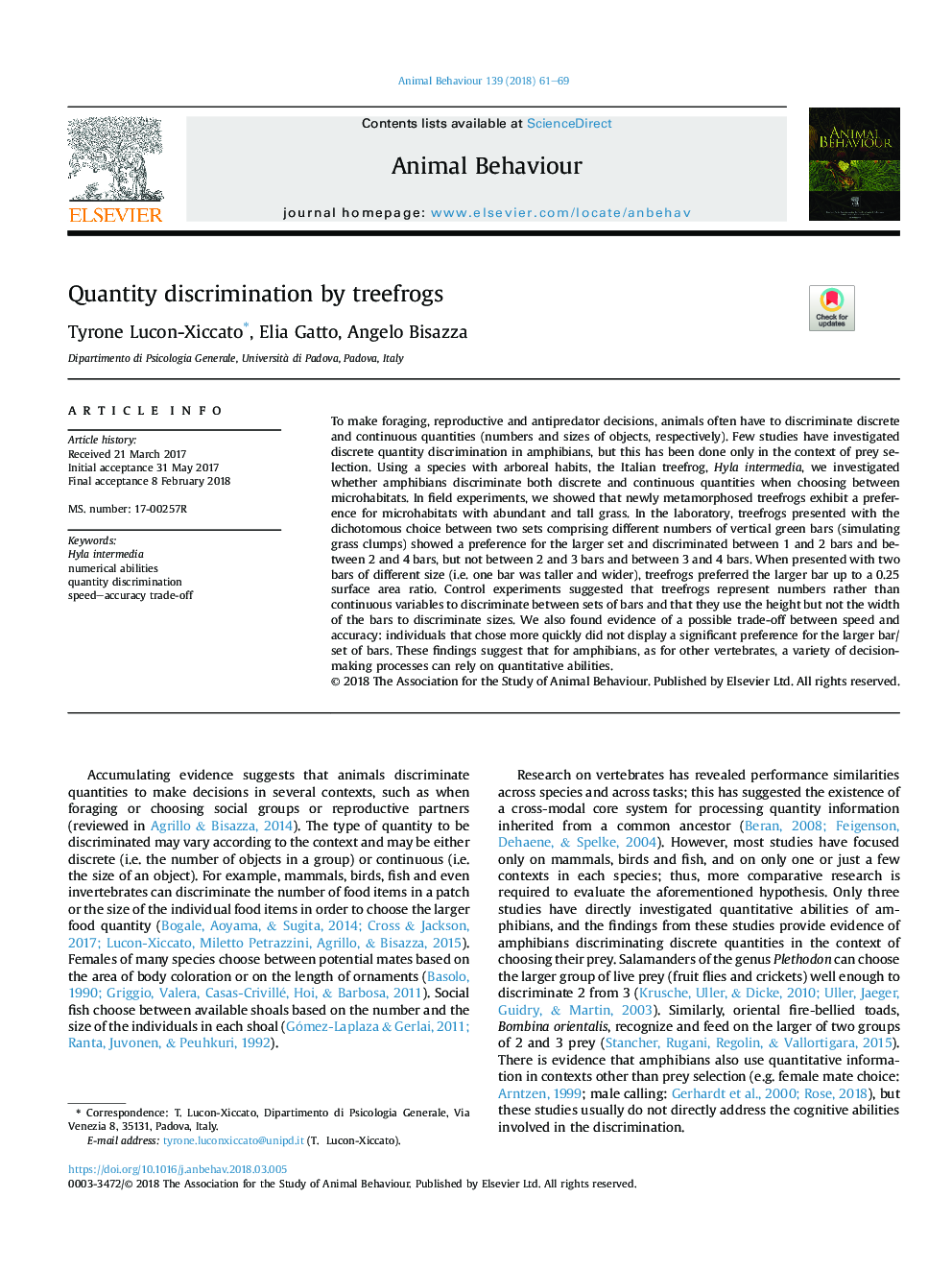| کد مقاله | کد نشریه | سال انتشار | مقاله انگلیسی | نسخه تمام متن |
|---|---|---|---|---|
| 8488558 | 1552189 | 2018 | 9 صفحه PDF | دانلود رایگان |
عنوان انگلیسی مقاله ISI
Quantity discrimination by treefrogs
دانلود مقاله + سفارش ترجمه
دانلود مقاله ISI انگلیسی
رایگان برای ایرانیان
موضوعات مرتبط
علوم زیستی و بیوفناوری
علوم کشاورزی و بیولوژیک
علوم دامی و جانورشناسی
پیش نمایش صفحه اول مقاله

چکیده انگلیسی
To make foraging, reproductive and antipredator decisions, animals often have to discriminate discrete and continuous quantities (numbers and sizes of objects, respectively). Few studies have investigated discrete quantity discrimination in amphibians, but this has been done only in the context of prey selection. Using a species with arboreal habits, the Italian treefrog, Hyla intermedia, we investigated whether amphibians discriminate both discrete and continuous quantities when choosing between microhabitats. In field experiments, we showed that newly metamorphosed treefrogs exhibit a preference for microhabitats with abundant and tall grass. In the laboratory, treefrogs presented with the dichotomous choice between two sets comprising different numbers of vertical green bars (simulating grass clumps) showed a preference for the larger set and discriminated between 1 and 2 bars and between 2 and 4 bars, but not between 2 and 3 bars and between 3 and 4 bars. When presented with two bars of different size (i.e. one bar was taller and wider), treefrogs preferred the larger bar up to a 0.25 surface area ratio. Control experiments suggested that treefrogs represent numbers rather than continuous variables to discriminate between sets of bars and that they use the height but not the width of the bars to discriminate sizes. We also found evidence of a possible trade-off between speed and accuracy: individuals that chose more quickly did not display a significant preference for the larger bar/set of bars. These findings suggest that for amphibians, as for other vertebrates, a variety of decision-making processes can rely on quantitative abilities.
ناشر
Database: Elsevier - ScienceDirect (ساینس دایرکت)
Journal: Animal Behaviour - Volume 139, May 2018, Pages 61-69
Journal: Animal Behaviour - Volume 139, May 2018, Pages 61-69
نویسندگان
Tyrone Lucon-Xiccato, Elia Gatto, Angelo Bisazza,